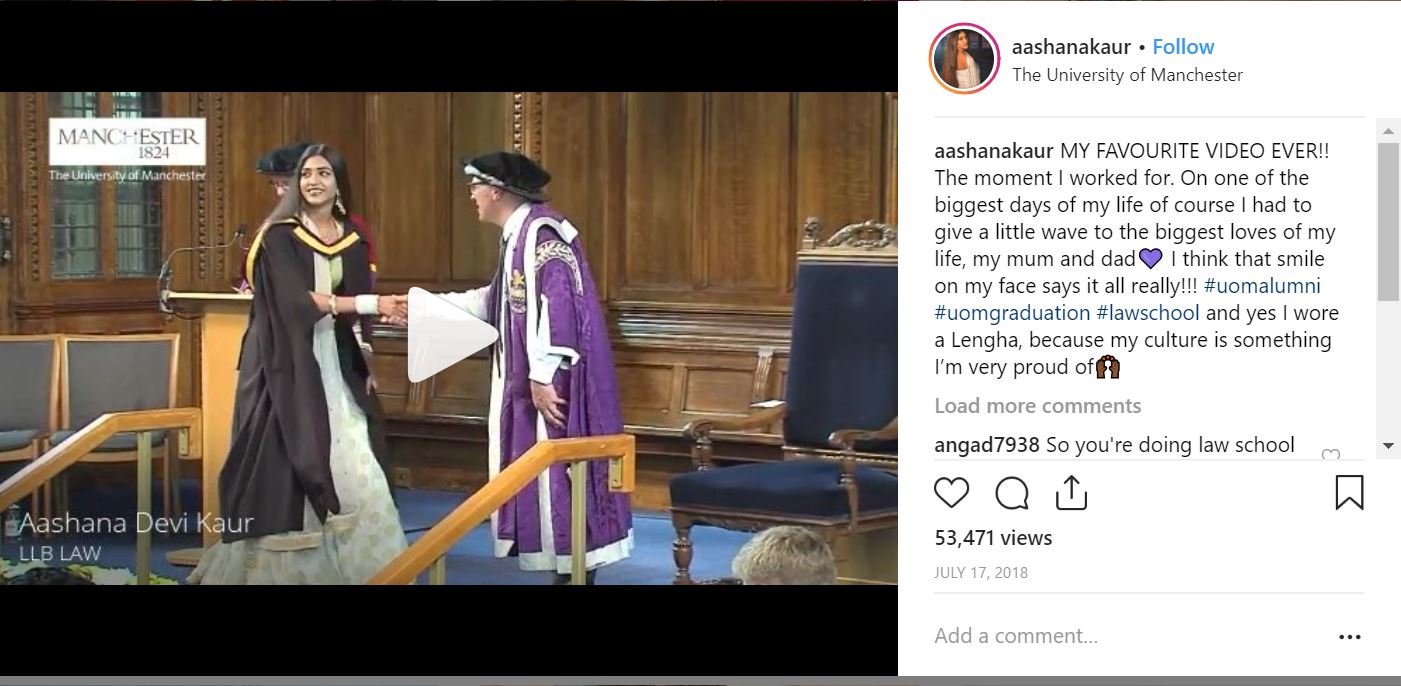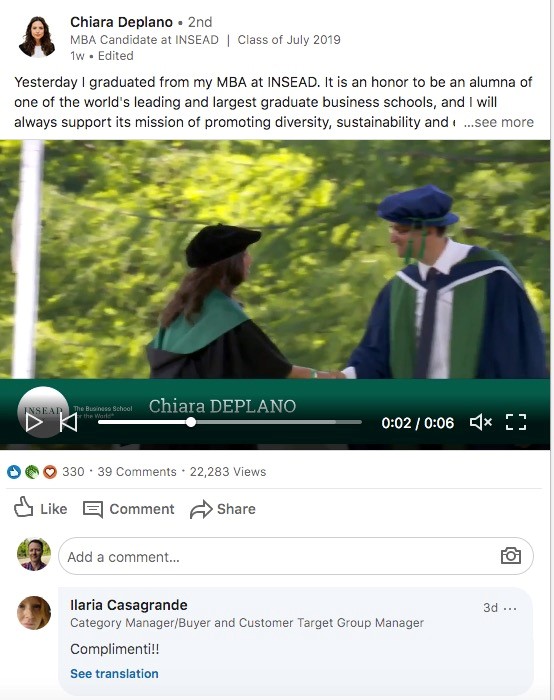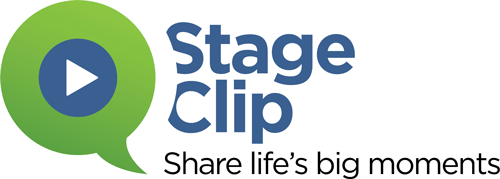"If I learned one thing, it’s that there’s always new ways to engage alumni!
Influencer marketing can be a vital tool for Alumni relations. Universities can now get 10x the engagement of a celebrity influencer. This article illustrates how they do it."
Graduation is a great time for new alumni engagement. The moment is for the individual yet thousands of people are intimately engaged. What if we could turn that engagement up a notch or two? How do we harness the power of this one significant event, and use it to promote institutional brands?
The science shows that all brands can win with emotional marketing.
So how do we as professionals translate this truth into practice by making sure our institutions are strong, recognised brands and engage our alumni fully? One answer is to identify the key special moments in the journey that matter, and give the audience those moments – it’s about them and let them share it genuinely and authentically. If you do this then by default your brand becomes stronger, your alumni more engaged and your recruitment enhanced.
The best way to add a human element is through storytelling. When you tell impactful stories, your audience remembers the feelings they experience and the elements of your story they connect with.
Maya Angelou, one of the most important literary voices in American history, said it best:
Every one of your students, alumni and community has a story to tell.. So how do we find a way to enable them to tell the story and share it? Of course, as marketers we want our institutions to be associated with it too! If the story telling comes from the students, it’s authentic and genuine and that has a strong impact on their peer groups. And as a consequence, it’s also building deeper relationships for your institution.
In fact, did you know that when it comes to understanding emotional appeal in marketing, scientists have found that positive emotions are more likely to convince us to share, retweet, and link our friends, than negative feelings.
We were totally unaware of this when we started our business, but we later realised that this is what’s made it successful. Here at StageClip, we take long form video of a 2-hour graduation ceremony and turn it into 30 second social media clips of individuals to share same day. It’s a happy, emotional and powerful moment and every one of those clips represents a story.
And not just for the individual who is graduating (who have put in countless hours of hard work perhaps doing a job at the same time), but also for all their loved ones and supporters, that for some families it might even represent the first person ever in their family to go to University.
What’s really interesting for a University is that you don’t need to go through the identification stage of finding your influencers. Companies spend a fortune analysing this. You don’t have to. Your influencers are your students and alumni. Use them!
Peer-to-peer (P2P) marketing is a method that involves customers engaging other customers through recommendations. A big component nowadays of word of mouth is Social Media. To translate this to our situations: The crux of peer to peer success is basically this.
People trust people like them.
Universities are already in a position where they have high trust with their audience. They become promoters of the brand/university.
But influencer marketing per se has taken a bit of beating recently and for very good reason. One of the most topical cases is the Fyre Festival. It turned out to be a fraudulent luxury music festival backed by a group of famous celebrities and influencers such as Kendall Jenner, Bella Hadid, Hailey Baldwin. Influencers were paid big bucks and had no idea what they were promoting and the customers suffered as a result.
There are 1000’s of cases where trust has been lost by influencers paid to promote product. In Kim Kardashian’s case there was a major backlash after she was paid to promote diet products for Flattummyco.
On the flip side there are brands such as Glossier – a make-up and beauty business that was named one of Fast Company’s Most Innovative Companies of 2017. They used a huge network of superfans and micro influencers to keep promoting Glossier’s products. Glossier CEO Emily Weiss said, “What’s very motivating to us is this idea of every single woman being an influencer.”
So how do universities and other learning institutions harness this power?
The method is simple - they're giving their graduates personalized video clips of their handshake moment as they cross the stage to receive their diploma. Clips are ready for grads to share on the same day. And all for the cost of a coffee and 20 minutes time to set-up.
Creating individualized video content is extremely compelling because it features the graduate. The moment is significant and therefore the clips are shared virally. This approach is easier, more cost-effective and has a better ROI than physical gifts.
Statistics and Facts
· Leeds Beckett University had 680,000 views from 5000 clips this summer. 83% of graduates completed an alumni survey to get a clip.
· Graduates get on average 10x more engagement sharing StageClip than celebrity influencer posts. Their combined reach can be greater too!
· Highest view counts are on Instagram (avg, 372 views) and LinkedIn (average 7k views - yes 7k!)
· Celebrity influencers charge upwards of $100k per post. StageClip are less than a coffee.
Here are a couple of perfect examples. Note the engagement on these social media posts.


You don’t need the Kim Kardashians of the world. Every student and alumnus is potentially a super fan AND an influencer that can promote your learning institution in an effective way.
In our research at StageClip, we delved into our own business to see what engagement looks like with our clips, and how that compares with celebrity influencers. Here are the definitions we applied:
· A celebrity influencer is someone who has a following of more than 7 million people.
· Micro-influencers have a following of 5,000 – 25,000 followers.
· Then we created our own “new” tier for nano-influencers (less than 5,000 followers)
According to Influency City, the average rate of engagement of a celebrity averages about 1.6% (likes, share and comments, combined). Micro influencers gets roughly 4% engagement.
Then, we checked our own metrics. When clips are shared by our nano-influencer audiences on Instagram the average is 16%. That’s 10x higher than a celebrity influencer!
Now, you’re probably scratching your head and saying, “Well, that’s great, but 1.6% of 7 million followers is 112,000 engagements. Our nano influencers have on average only 751 followers, so the engagement is 120. Hmmm.”
But this is where it gets good. Every single university has loads of nano influencers! So collectively, each Alumni relations team can be more powerful in terms of reach and more impactful in terms of depth, particularly if you link to emotional stories that resonate and use video content.
To get the same numbers as a celebrity, who incidentally will charge you upwards of $100k for a post, you only need 933 nano influencers. They are unpaid and true advocates of your brand! Your nano influencers are sharing directly in their peer networks. What does this mean? It means they’re a trusted voice endorsing your brand so when it comes to the brothers, sisters, cousins and friends making decisions on their future education, you’ve already got a head start. By connecting emotionally with your alumni, you are driving deep engagement for the future and when the time comes, they’ll give back.
It is the simple theory of reciprocity: give before you take.
Since we specialise in personalised graduation video clips, our research is based round this but it does provide some useful insights on ROI too. For example, if you had a graduating class of 5000 people as Leeds Beckett did this summer, you could expect a potential 600,000 engagements from clips. The sharing statistics revealed they had 680,000 views from 5002 video clips. The cost of doing this is less than £10K. Compare that to PPC, radio, billboard advertising or paying celebrity influencers and you can see why P2P content is the way to go.
What is the Key Takeaway?
· The ability to tune into fundamental human truths, even though they can’t be backed up with graphs and charts, and give these truths to your audience to enable them to share authentically, has immense power.
· If you create emotional content, and you use video to present it, you make it personal to the individual.
· And…if you amplify using P2P nano influencer networks, you’ll spend way less money for far greater impact. In addition, you’ll put more “bums on seats,” as it were, and your alumni will give back more, to boot.
If University alumni teams get this secret sauce right then the results are very powerful.
